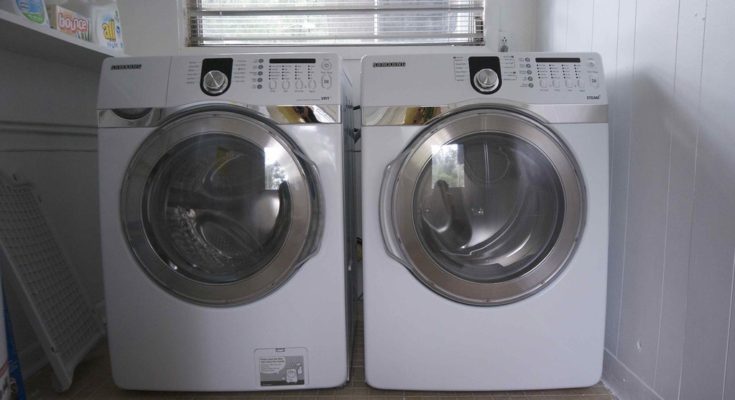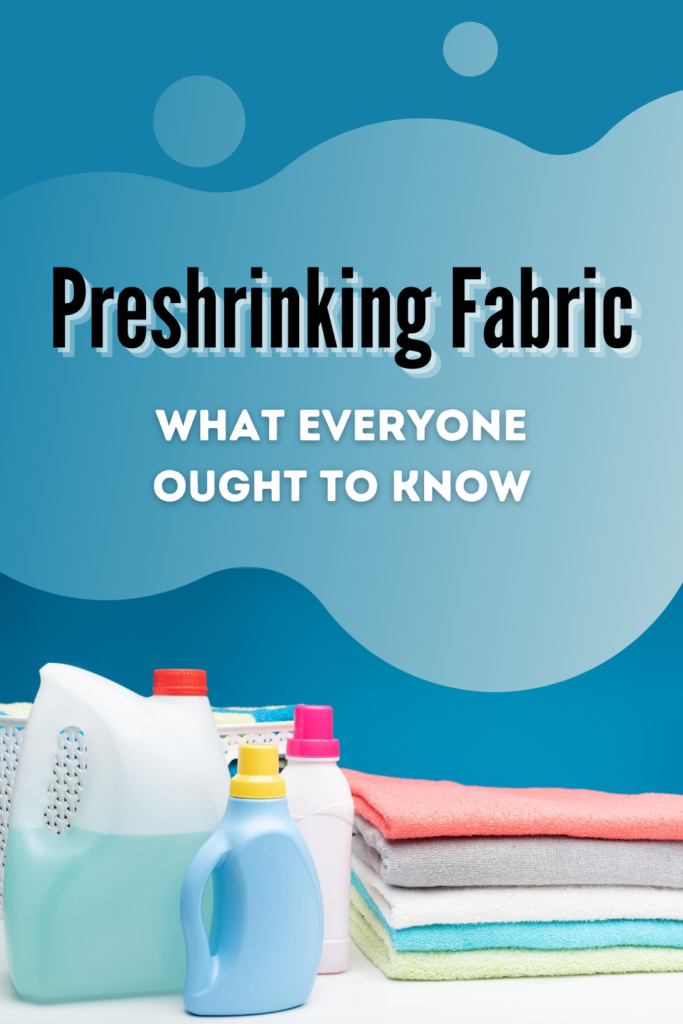Disclosure: This post may contain affiliate links. I earn a small commission when you click a link and make a purchase. Thanks for supporting SewingSociety.com!
As soon as you get home from the fabric store, you should make plans to preshrink all the fabric that you bought. That way it will be ready to use when you are ready to sew!
Preshrinking prevents your finished sewing project from getting distorted or ruined when you wash it for the first time. Some fabrics are more susceptible to shrinkage than others, such as cotton, but it’s still a good idea to preshrink all fabric.
Basic Method for Preshrinking Fabric
Most fabric shrinks when it is washed. So, when someone tells you to preshrink your fabric, what they really mean is to wash it before you use it. This could mean either machine laundering or dry cleaning, depending on your fabric.
Not all fabric shrinks, but it’s still a good idea to wash or dry clean most fabric before you sew with it to remove excess dyes and chemicals used during the manufacturing process.
In general, all you need to do to preshrink your fabric is run it through a normal wash cycle on your washing machine and then dry it. The heat is what does most of the shrinking. You don’t need to use soap when preshrinking your fabric, but I usually do because it helps remove some of the chemicals and dyes left on your fabric.
Many people like to serge all the cut edges of their fabric before laundering to prevent ravel, too. However, this isn’t necessary unless you know your fabric will ravel badly, such as denim.
Preshrinking Fabric That Can’t Be Washed
Some fabric would be ruined if you put it through a cycle in your washing machine, so be careful. Always wash your fabric in the same method you plan to care for your finished sewing project. So, if your fabric requires dry cleaning, don’t risk putting it in your washer to preshrink it.
If you never plan to wash your finished sewing project, then it is ok to skip the preshrinking step. However, this is a rare scenario.
How to Preshrink Common Fabrics
Whenever I buy fabric, I always make it a point to look at the fabric care guide on the end of the bolt before taking it to the cut table. This way I know exactly what kind of fabric I am buying and how to care for it. I suggest you do the same.
If you forget to look at the fabric care label, the following list can help you decide the proper preshrinking method:
- Acetate: Machine wash on a gentle cycle (or dry clean). Use a low iron.
- Acrylic: Machine wash on a normal cycle.
- Bamboo: Machine wash on a normal cycle. Use a medium/high iron.
- Cashmere: Dry clean. Use a low iron on the wrong side of the fabric.
- Cotton: Machine wash on a normal cycle. Iron while the fabric is still damp.
- Hemp: Machine wash on a gentle cycle or hand wash. Use a medium/high iron.
- Linen: Machine wash on a gentle cycle or hand wash. Use a medium/high iron while the fabric is still damp.
- Mohair: Dry clean. Use a press cloth to iron.
- Nylon: Machine wash on a gentle cycle or hand wash. Use a low iron.
- Polyester: Machine wash on a normal cycle. Use a low iron, if needed.
- Ramie: Machine wash on a gentle cycle or hand wash. Use a medium/high iron.
- Rayon: Dry clean. Use a medium iron.
- Silk: Dy clean or hand wash. Use a low iron on the wrong side of the fabric.
- Soy: Machine wash on a normal cycle. Use a medium/high iron.
- Spandex: Machine wash on a normal cycle. Use a low iron.
- Wool: Dry clean or hand wash. Use a steam iron.
Also Read: How to Prep Fabric Before Sewing
Share this post on Pinterest!






2 Comments on “What Everyone Ought to Know About Preshrinking Fabric”